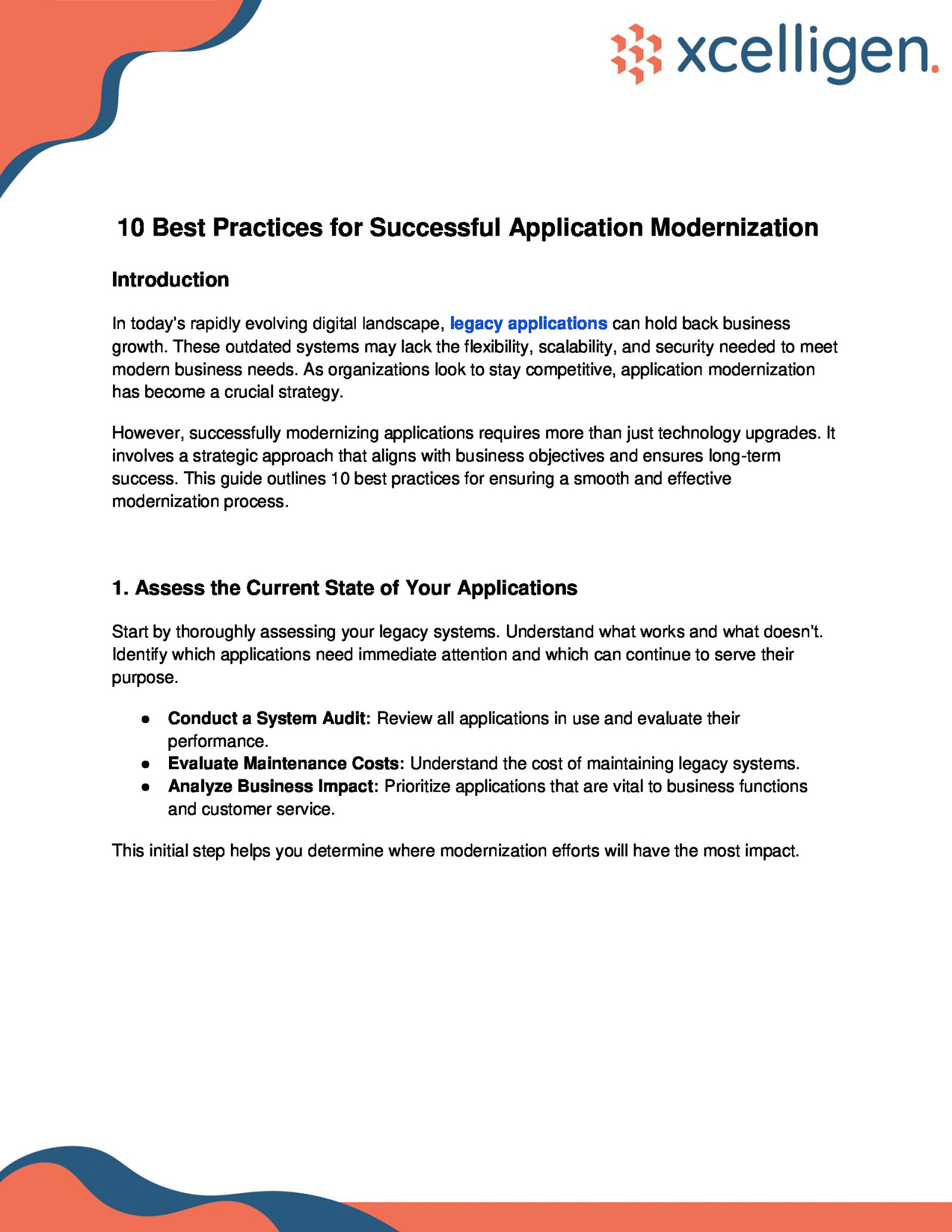A presentation at 10 Best Practices for Successful Application Modernization in in Herndon, VA 20170, USA by Xcelligen Inc

10 Best Practices for Successful Application Modernization Introduction In today’s rapidly evolving digital landscape, legacy applications can hold back business growth. These outdated systems may lack the flexibility, scalability, and security needed to meet modern business needs. As organizations look to stay competitive, application modernization has become a crucial strategy. However, successfully modernizing applications requires more than just technology upgrades. It involves a strategic approach that aligns with business objectives and ensures long-term success. This guide outlines 10 best practices for ensuring a smooth and effective modernization process.
● ● ● Form Cross-Functional Teams: Include business and technical experts to guide the modernization process. Encourage Open Communication: Keep all stakeholders informed and involved throughout the journey. Gather End-User Feedback: Regularly check in with users to ensure the modernized application meets their needs. Collaboration ensures alignment and creates a shared vision for successful modernization. 9. Ensure a Smooth Transition with Phased Migration Instead of modernizing everything at once, use a phased migration strategy to minimize disruptions. This approach allows for continuous improvements while avoiding major system overhauls that could impact daily operations. ● ● ● Plan a Gradual Rollout: Migrate non-essential applications first before moving on to mission-critical ones. Test in Stages: Conduct thorough testing in each phase to ensure functionality and performance. Minimize Downtime: Migrate during off-peak hours to reduce disruptions. A phased approach reduces risk and ensures a smoother transition to modernized systems. 10. Provide Ongoing Support and Training Application modernization doesn’t end with deployment. Ongoing support and training are necessary to ensure that your teams fully leverage the new system and continue to derive value from it. ● ● ● Offer User Training: Provide comprehensive training to help users understand and navigate the new system. Establish Support Systems: Have a dedicated support team to address any issues quickly. Monitor Performance Continuously: Regularly track system performance to ensure it meets expectations.
Conclusion Modernizing applications is a complex, yet essential process for organizations seeking to stay competitive in today’s fast-paced digital world. By following these 10 best practices—such as assessing current systems, aligning with business objectives, prioritizing security, and leveraging agile methods—organizations can ensure their modernization journey is successful. At Xcelligen, we specialize in application modernization, offering solutions tailored to your unique business needs. Whether you’re rehosting, refactoring, or replacing legacy systems, we can help guide you through the process and unlock the full potential of your technology. Contact us today to start your modernization journey.
Discover the 10 best practices for successful application modernization to enhance scalability, improve performance, and align with business goals.